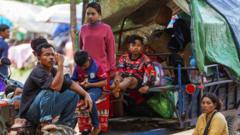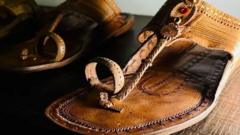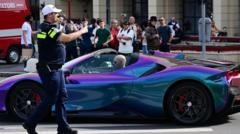Diana Sosoaca, a far-right politician, has uniquely branded her campaign around the "ie," donning it as a staple in her public appearances. Following her lead, other political figures, like George Simion, have also embraced the traditional attire in their outreach efforts. Simion, who recently fell short in a presidential race, carries the cultural emblem as a means to resonate with patriotic sentiments among constituents.
Through this cultural revival, ultranationalist Calin Georgescu garnered attention in a campaign featuring TikTok videos of him adorned in the blouse while riding a horse. The image of modern politicians adorned in traditional garb signifies a growing tension between national identity and cultural heritage.
However, critics argue that the appropriation of this cultural symbol by nationalists undermines its significance. They contend the blouse belongs not solely to any political faction but to all Romanians, transcending divisive politics. This cultural appropriation debate reflects broader societal rifts and sentiments regarding national pride verses inclusive identity.
As the blouse gains popularity among the political elite, the ongoing discussion presents an opportunity for heightened awareness of the importance of shared cultural heritage, and how clothing can stir emotion and unite or divide society. This visual garment thus becomes not only a piece of fabric but a catalyst for conversation on identity and belonging in contemporary Romania.
Through this cultural revival, ultranationalist Calin Georgescu garnered attention in a campaign featuring TikTok videos of him adorned in the blouse while riding a horse. The image of modern politicians adorned in traditional garb signifies a growing tension between national identity and cultural heritage.
However, critics argue that the appropriation of this cultural symbol by nationalists undermines its significance. They contend the blouse belongs not solely to any political faction but to all Romanians, transcending divisive politics. This cultural appropriation debate reflects broader societal rifts and sentiments regarding national pride verses inclusive identity.
As the blouse gains popularity among the political elite, the ongoing discussion presents an opportunity for heightened awareness of the importance of shared cultural heritage, and how clothing can stir emotion and unite or divide society. This visual garment thus becomes not only a piece of fabric but a catalyst for conversation on identity and belonging in contemporary Romania.


















